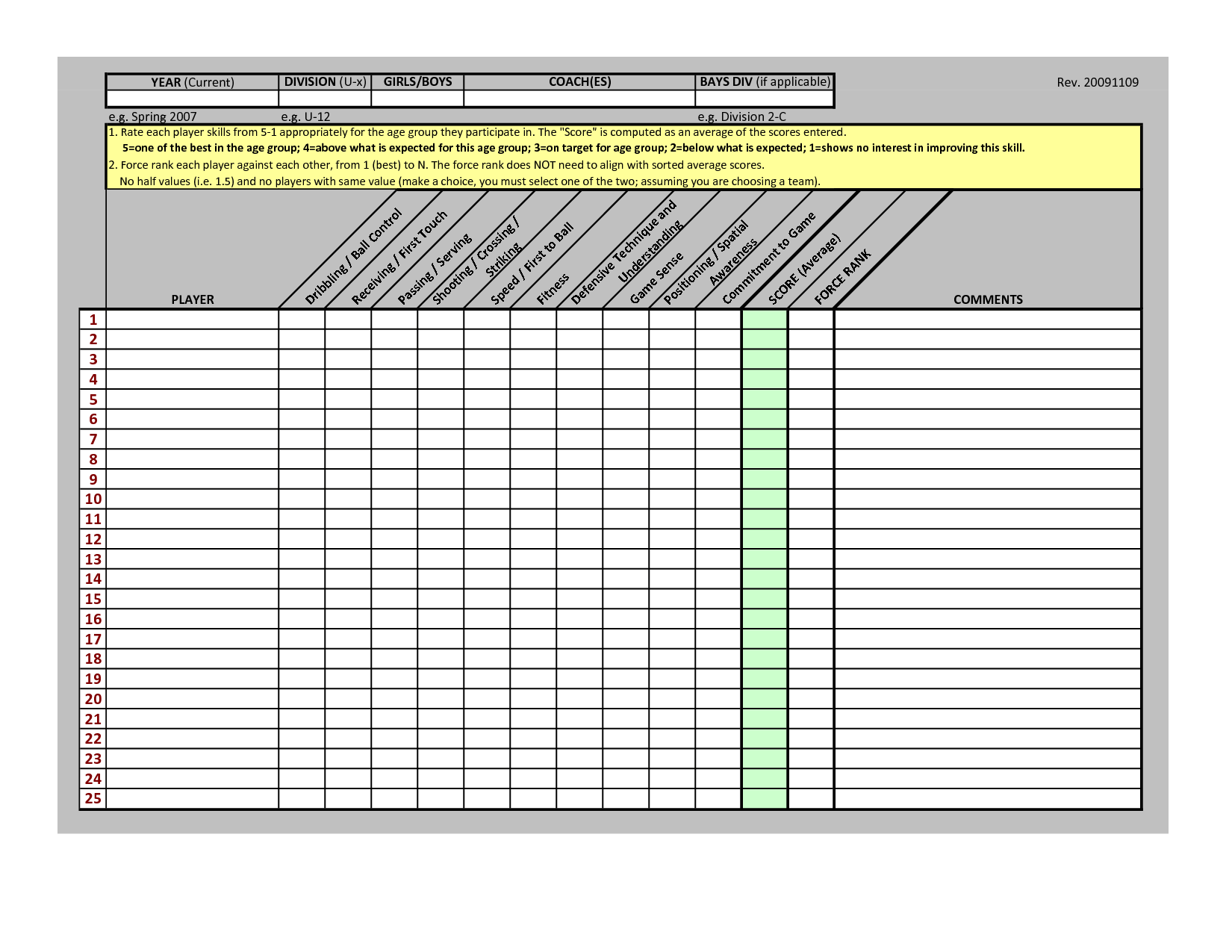Soccer tryouts are a crucial part of the selection process for any team. They allow coaches to evaluate the skills and abilities of potential players and determine who is the best fit for their team. However, tryouts can be a stressful experience for both players and coaches, and the use of tryout forms can help to streamline the process and make it more efficient.
Tryout forms are a standardized way for coaches to collect important information about potential players, such as their contact information, playing experience, and medical history. By using a consistent form for all players, coaches can easily compare and evaluate each player’s strengths and weaknesses. Additionally, tryout forms can help to ensure that all necessary information is collected and that no important details are overlooked.
There are many different types of tryout forms available, ranging from simple one-page documents to more complex forms that include detailed evaluations and assessments. Coaches can choose the type of form that best suits their needs and customize it to include any additional information they require. By using tryout forms, coaches can ensure that their tryouts are fair, efficient, and effective in selecting the best players for their team.
Why Soccer Tryout Forms are Important
Soccer tryout forms play a crucial role in the process of selecting players for a team. They help coaches and team managers to evaluate players based on various criteria, such as skill level, physical fitness, and attitude. Here are a few reasons why soccer tryout forms are important:
- Objective Evaluation: Soccer tryout forms provide an objective way to evaluate players. By using a standardized form, coaches can assess each player’s performance consistently and fairly.
- Documentation: Tryout forms provide documentation of a player’s performance, which can be used later for reference. This is particularly important if a player is being considered for multiple teams or if there is a dispute about a player’s performance.
- Communication: Soccer tryout forms can be used to communicate with players and parents. For example, coaches can use the forms to provide feedback to players or to inform parents about the selection process.
Overall, soccer tryout forms are an essential tool for coaches and team managers. They help ensure that players are selected based on their skills and abilities, rather than subjective factors such as personal relationships or biases. By using tryout forms, coaches can make informed decisions that benefit the team as a whole.
What to Include in a Soccer Tryout Form
When creating a soccer tryout form, it’s important to include all the necessary information to ensure a smooth and efficient tryout process. Here are some key elements to consider when designing your form:
- Player Information: This section should include the player’s full name, date of birth, contact information, and any relevant medical information.
- Parent/Guardian Information: It’s important to gather contact information for the player’s parent or guardian in case of emergency.
- Previous Soccer Experience: This section should ask for details about the player’s previous soccer experience, including any clubs or teams they’ve played for and their positions.
- Skills Assessment: To evaluate the player’s abilities, include a section for coaches to rate the player’s skills in areas such as dribbling, passing, shooting, and defending.
- Waiver and Release: Make sure to include a waiver and release form that players and parents/guardians must sign to acknowledge the risks associated with playing soccer and release the club from liability.
By including these elements in your soccer tryout form, you can ensure that you have all the necessary information to evaluate players fairly and effectively, while also protecting your club from liability.
Tips for Creating Effective Soccer Tryout Forms
Creating effective soccer tryout forms is crucial for coaches to evaluate players and select the best team. Here are some tips to help you create effective soccer tryout forms:
- Include all necessary information: Make sure to include player’s name, age, contact information, position, and any relevant experience. This will help coaches to easily identify players and evaluate their skills.
- Be specific: Use specific questions and rating scales to evaluate players’ skills. This will help coaches to accurately evaluate players and make informed decisions.
- Use clear language: Use clear and concise language to explain the purpose and instructions of the tryout form. This will help players to understand what is expected of them and provide accurate information.
- Organize the form: Organize the form in a way that is easy to read and follow. Use tables, bullet points, and other HTML tags as necessary to make the form visually appealing and easy to navigate.
- Provide feedback: Provide feedback to players after the tryout. This will help players to understand their strengths and weaknesses and improve their skills for future tryouts.
By following these tips, coaches can create effective soccer tryout forms that will help them to evaluate players and select the best team.
Conclusion
Overall, soccer tryout forms are an important part of the tryout process. They provide coaches with valuable information about each player, including their contact information, medical history, and skill level. By filling out these forms accurately and completely, players can increase their chances of being selected for the team.
It is important for coaches to design tryout forms that are easy to understand and fill out. This will help ensure that all players provide the necessary information and that the tryout process runs smoothly. Coaches may want to consider using online forms or mobile apps to make the process even easier for players and parents.
Finally, it is important to remember that tryouts can be stressful for players and parents alike. Coaches should do their best to create a positive and supportive environment, and to communicate clearly with everyone involved. By following these tips and best practices, coaches can help ensure that tryouts are a success for everyone involved.







